Cottonmouths are venomous snakes known by a slew of other names, including water moccasin, black moccasin, and swamp moccasin. Their primary nickname is in reference to their white colored mouth, which they display when feeling threatened.
This species is considered to be quite dangerous, and their venom can kill a human if left untreated. However, the temperament of these snakes is exaggerated, and they bite only when they feel threatened. Read on to learn about the cottonmouth.
Description of the Cottonmouth
Cottonmouths are relatively large snakes. Though individuals may reach up to 6 ft. in length, their average size is closer to approximately 3 ft. long. Like many other venomous snake species, they have very broad, triangular heads.
Adults are mostly or totally black, with brown, grey, or tan patches. Sub adults and hatchlings are lighter in color, with more dramatically visible banding and patterns. Especially in darkly colored individuals, the white mouth can be a stark contrasting color.
Interesting Facts About the Cottonmouth
Cottonmouths are venomous, and they can be quite dangerous if you disturb or threaten them, but they should not be vilified. They are not outright aggressive and seeking to bite humans and would rather flee than bite, despite a reputation for aggression.
- Wait and See – This species of snake is an ambush predator. They lie in wait, both during the day and at night, and watch for likely prey to pass nearby. When a small mammal, fish, or bird wanders too close, the snake strikes and lets it’s venom do the work for it.
- Lure – Young cottonmouths have a little extra help in their waiting game. The tips of their tails are yellow in color, which helps lure prey closer to the snake. They wiggle their tail about, giving it a worm-like appearance that attracts small prey.
- Misidentification – These snakes are similar in appearance to a few species of water snakes. Unfortunately, this similarity results in the death of many harmless snakes. Killing venomous snakes is incredibly dangerous and should be avoided at all costs, many venomous snake bites occur because the person was attempting to kill the snake.
- Swimming Snake – Another reason water snakes are commonly mistaken for cottonmouths is because they reside in similar habitats. Both species are semi-aquatic, and spend much of their time hunting in the water. These snakes search for prey, like frogs and small fish, among the dense vegetation in lakes, ponds, wetlands, and rivers.
Habitat of the Cottonmouth
This species of snake is semi-aquatic, and thus attracted to areas with sources of water. They are commonly found in marshes, lakes, swamps, streams, creeks, and ponds.
For the most part they prefer aquatic habitats with slow-moving water and plenty of aquatic vegetation to attract prey and provide hiding places. Most of the time they remain in freshwater, but they are occasionally found in brackish, or saltwater environments.
Distribution of the Cottonmouth
This species of snake can be found across the southeastern United States. Within their range the species is broken up into three separate subspecies; the Florida, western, and eastern cottonmouths. The Florida subspecies is found in Florida, southern Georgia, and a number of different islands.
The western subspecies is located in the westernmost section of their range, from Alabama to Texas, and as far north as Oklahoma, Missouri, Indiana, and Illinois. The eastern subspecies is found to the north of the Florida subspecies, from Georgia to North Carolina.
Diet of the Cottonmouth
These ambush predators will feed on a wide variety of prey, but the vast majority of their diet consists of small fish and frogs. This is to be expected, as their preferred hunting habitat is shallow water and aquatic vegetation.
They use their long bodies to corral small fish and tadpoles into the shallows, and then gorge themselves on as many as they can catch. Some other prey includes small mammals, other snakes, birds, insects, lizards, and even young alligators! This species is also reported to cannibalize smaller individuals.
Cottonmouth and Human Interaction
While these snakes are venomous, and can pose quite a danger to humans if bitten, they are unnecessarily persecuted. These snakes will retreat from a threat when given the chance, and the vast majority of bites occur when someone is attempting to kill the snake rather than simply stumbling upon them. Because of this persecution, along with habitat destruction, localized population decreases have occurred and some subspecies are considered threatened.
Domestication
This snake has not been domesticated in any way.
Does the Cottonmouth Make a Good Pet
These snakes are venomous, and can be extremely dangerous. If this snake bites you, you can die, which makes it a very undesirable pet.
Cottonmouth Care
In a zoological setting these snakes are provided with dense vegetation, hiding places, and a large water source. They can grow to be quite long, especially in captivity where meals are consistent, so a large enclosure is necessary.
The enclosure should be secure to prevent escapes, and any handling should be done with extreme caution. They can be fed fish, small mammals, chicks, etc. depending on their size and age.
Behavior of the Cottonmouth
Though superstitiously believe to be an “aggressive” snake, when wild specimens were tested for response to human encounters, half of the snakes immediately attempted to flee, while the rest exhibited a threat display.
The snakes in the test only struck when lifted with a mechanical hand. Most of their time is spent in or around the water, and they are commonly viewed sunning themselves when out of the water. Hunting occurs both during the daytime and at night.
Reproduction of the Cottonmouth
Like many other venomous snake species, cottonmouths are ovoviviparous. This means that they give “live” birth to young instead of laying eggs. On average, females give birth to 6 – 8 young, but litters up to 20 have been recorded. Though there are a few accounts of females defending newly born litters, the offspring are usually independent and receive no maternal care.

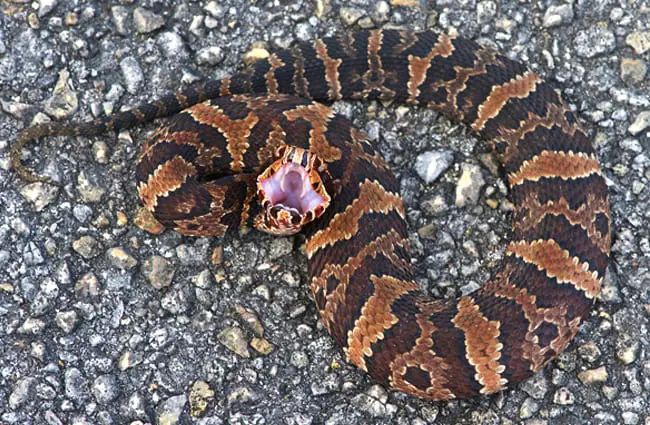
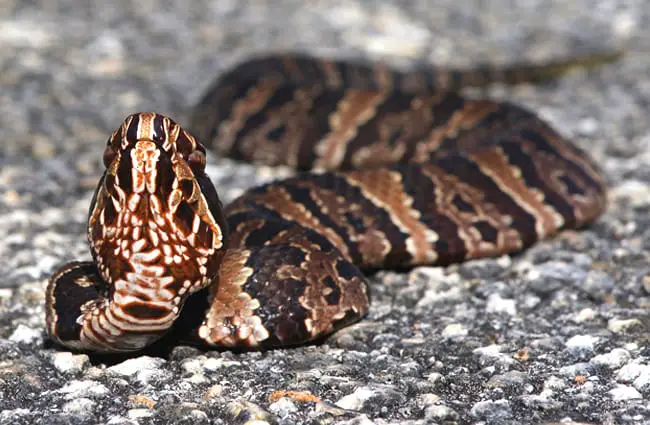
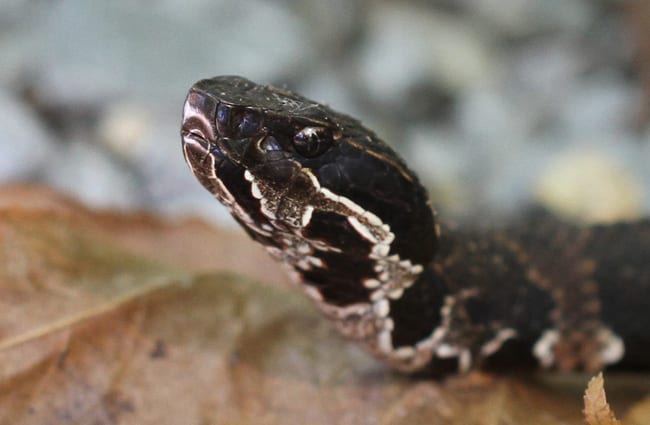



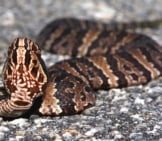
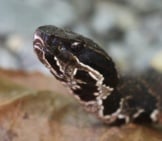

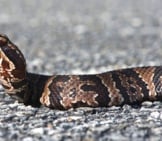
![Red Angus Closeup of a beautiful Red Angus cowPhoto by: U.S. Department of Agriculture [pubic domain]https://creativecommons.org/licenses/by/2.0/](https://animals.net/wp-content/uploads/2020/03/Red-Angus-4-238x178.jpg)












![Red Angus Closeup of a beautiful Red Angus cowPhoto by: U.S. Department of Agriculture [pubic domain]https://creativecommons.org/licenses/by/2.0/](https://animals.net/wp-content/uploads/2020/03/Red-Angus-4-100x75.jpg)

